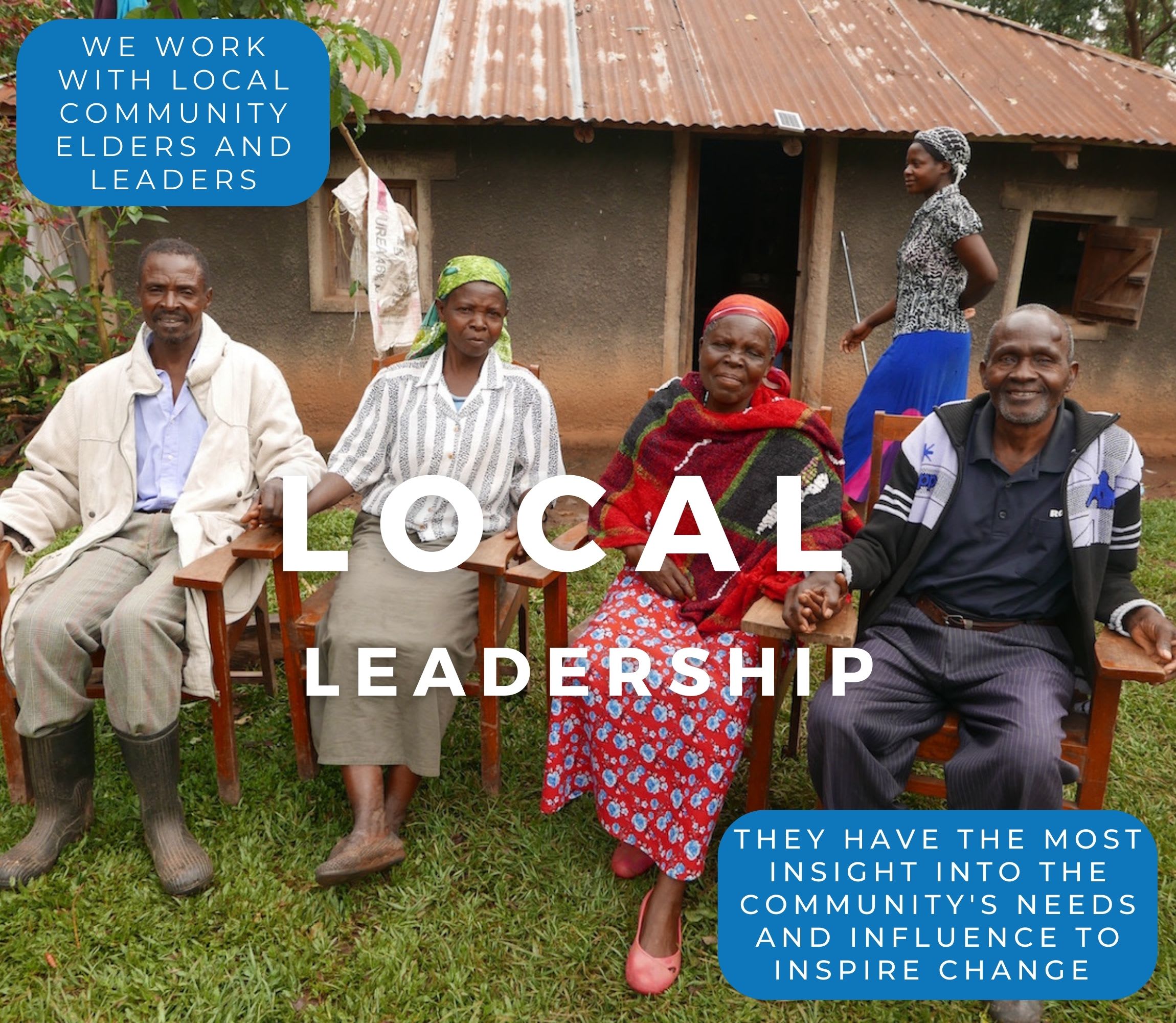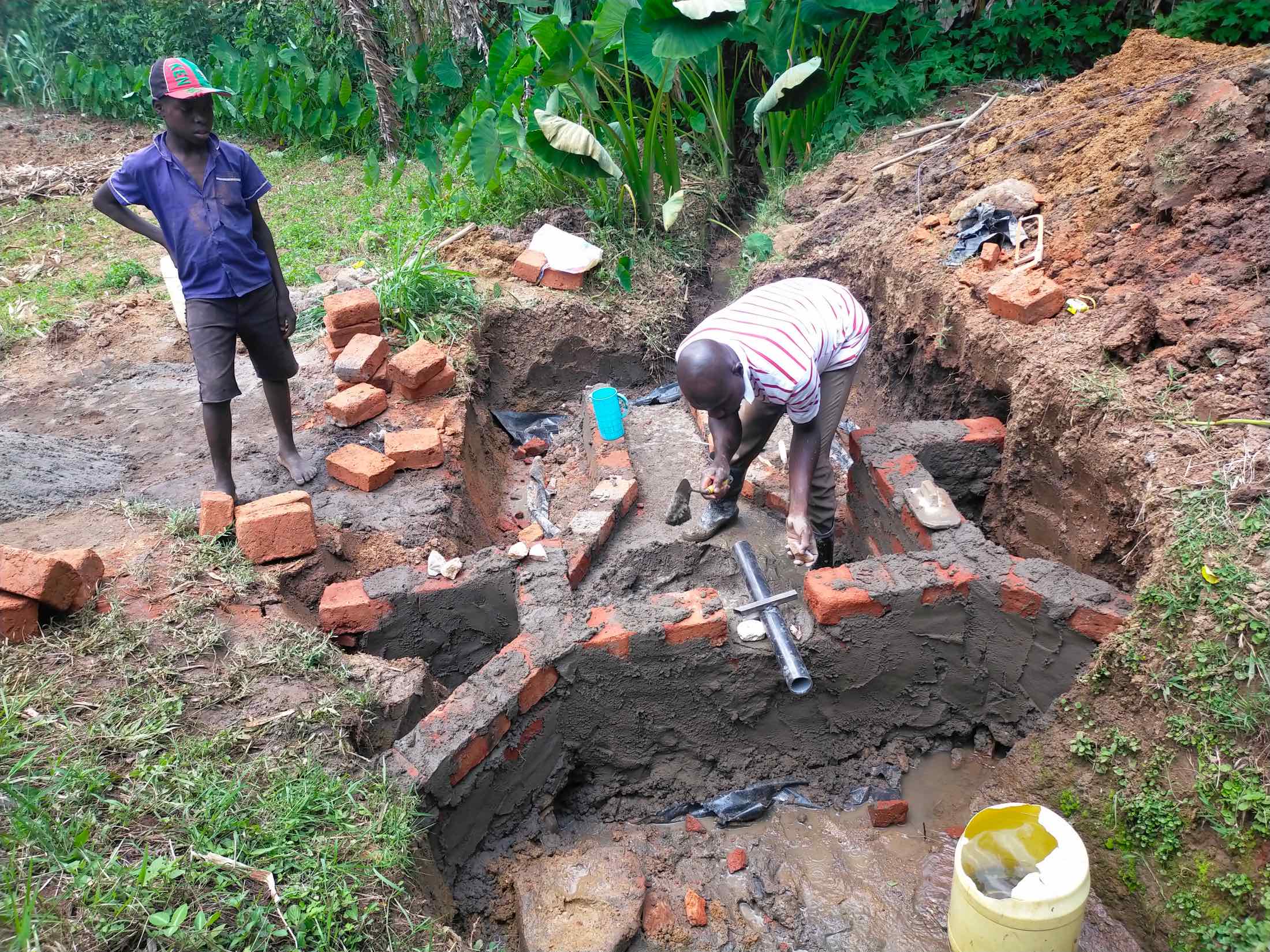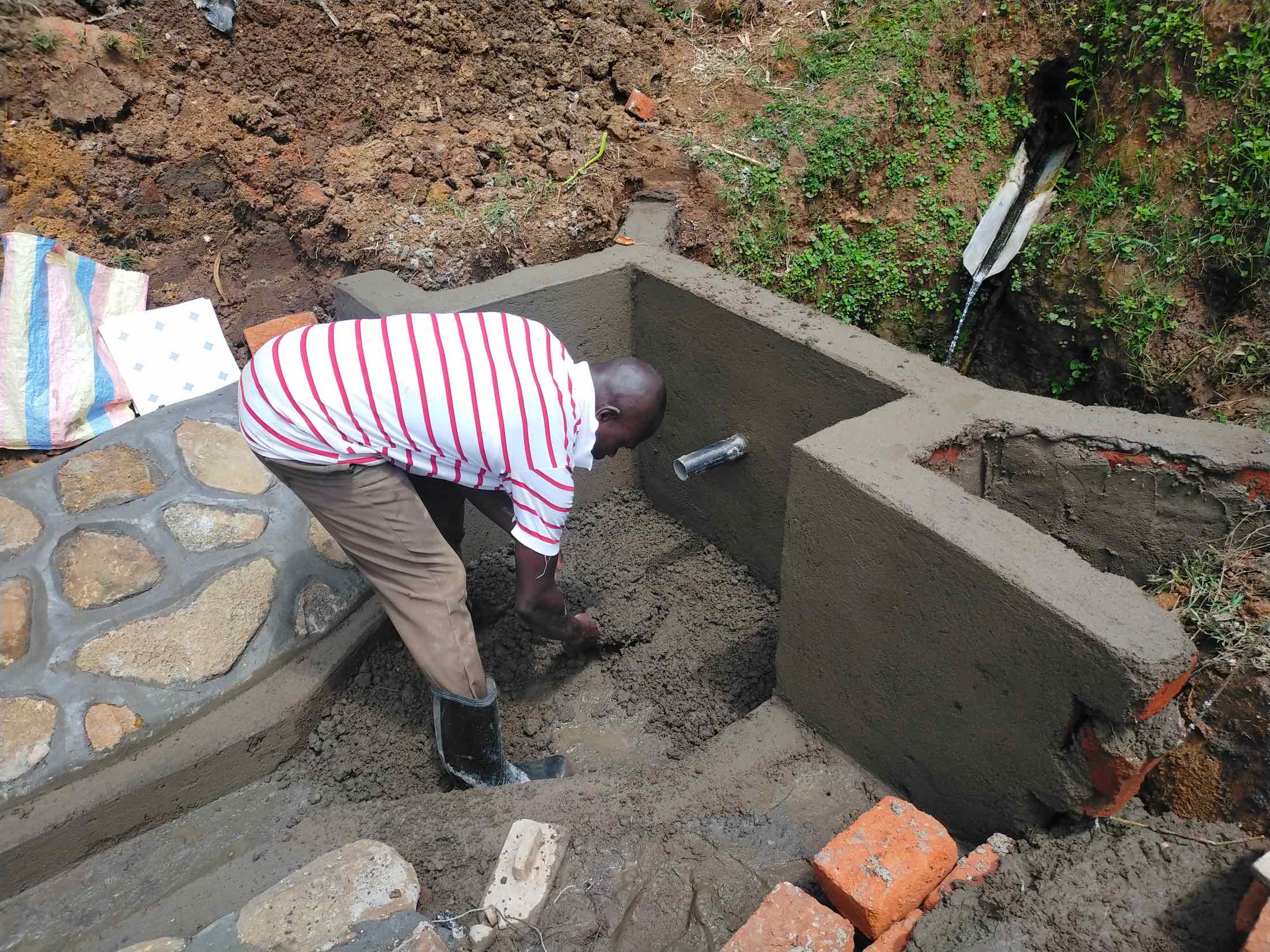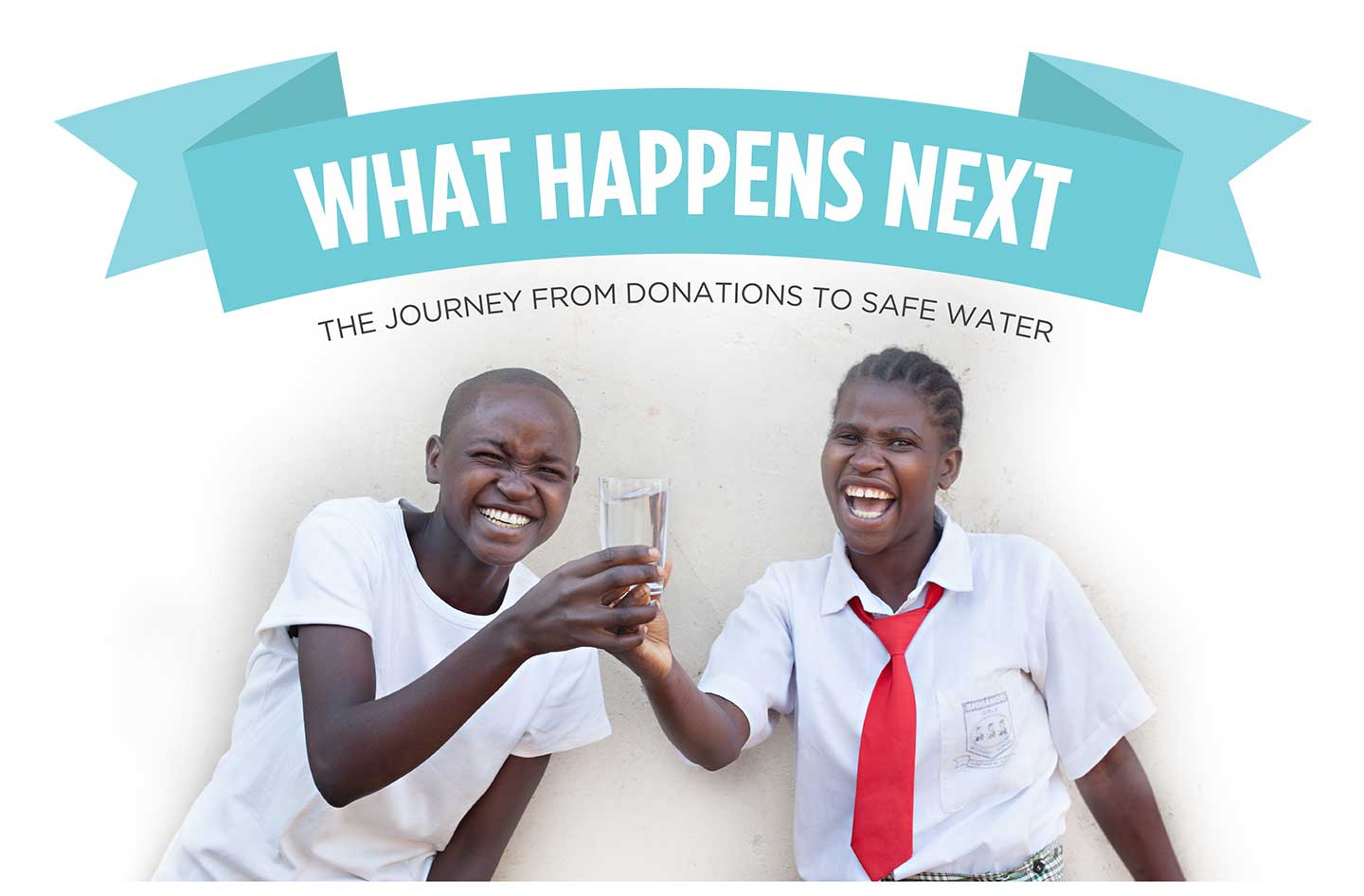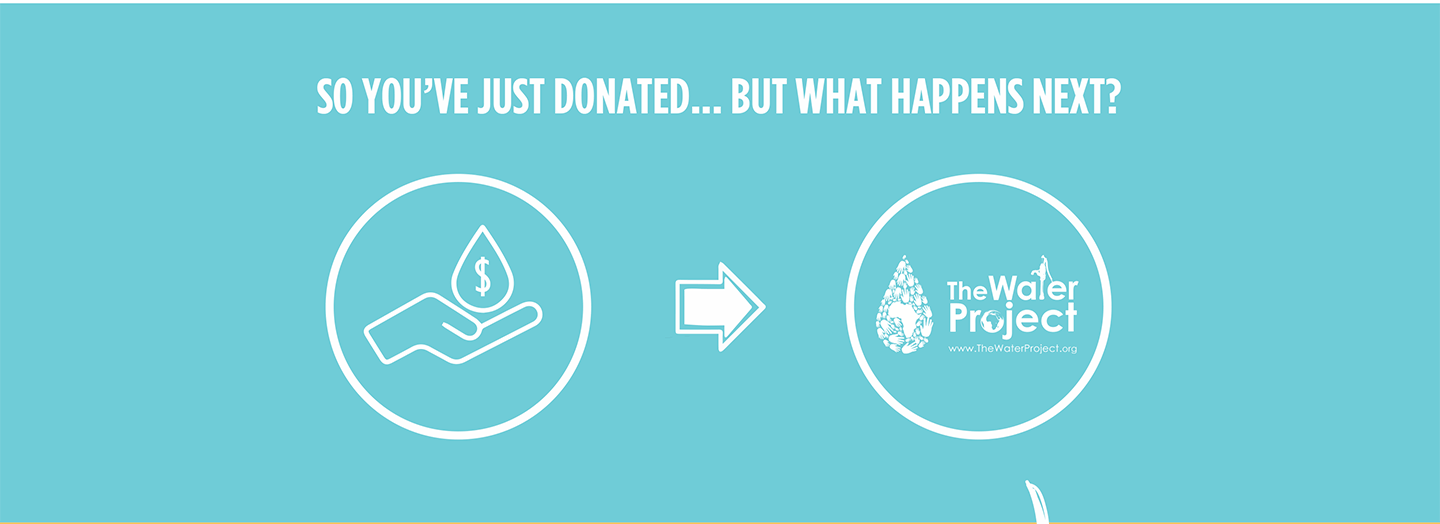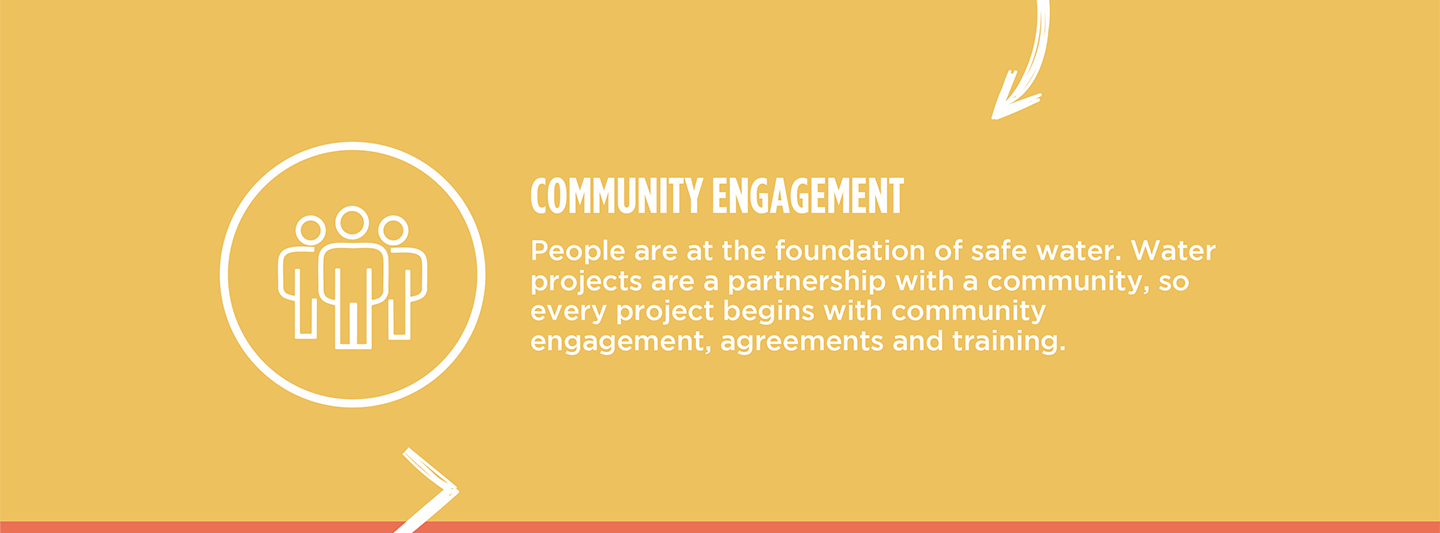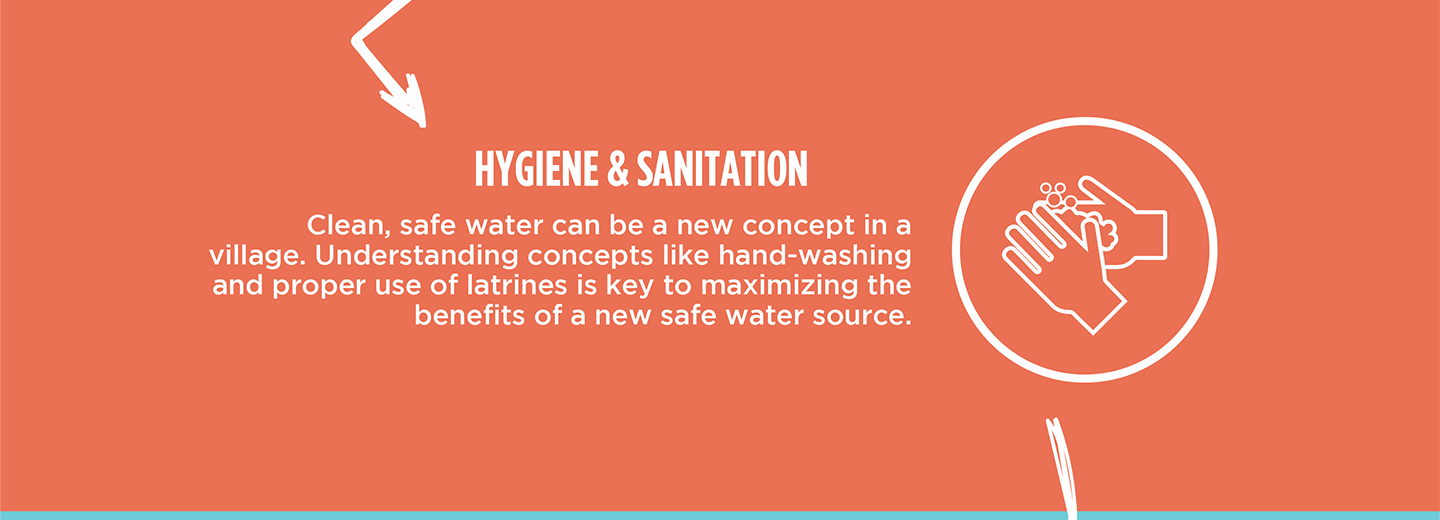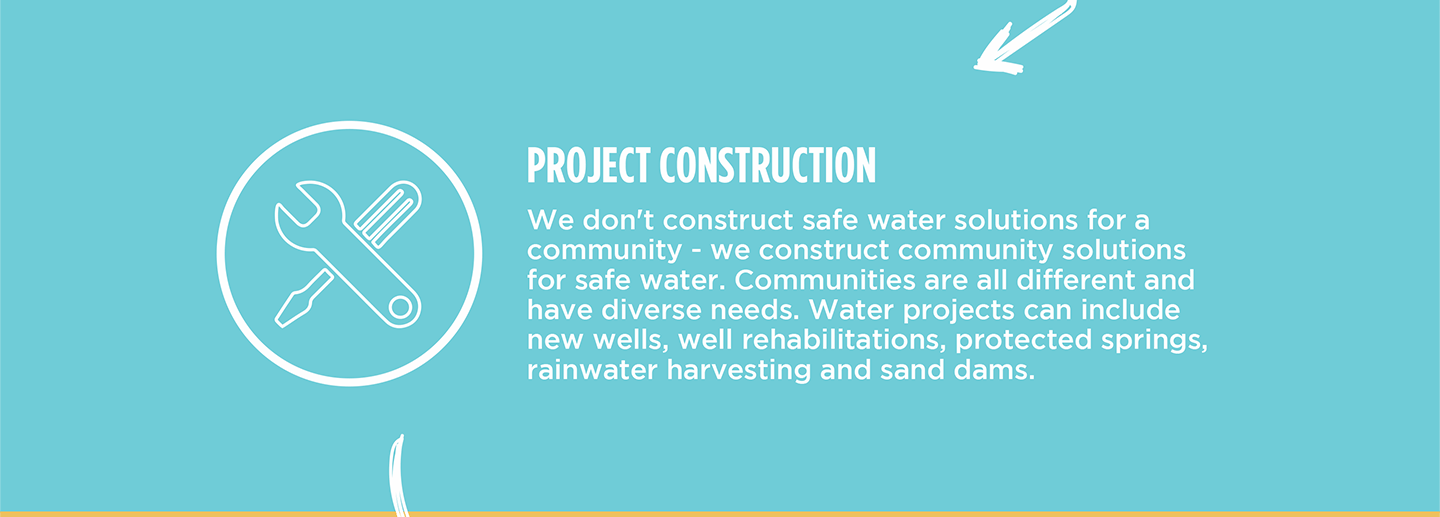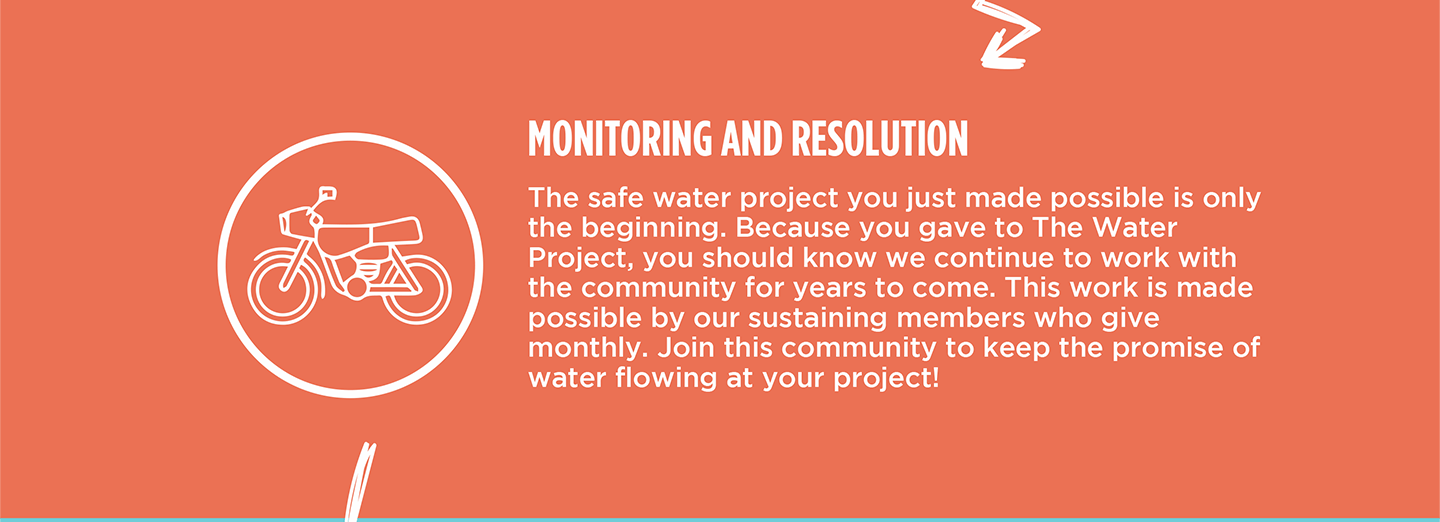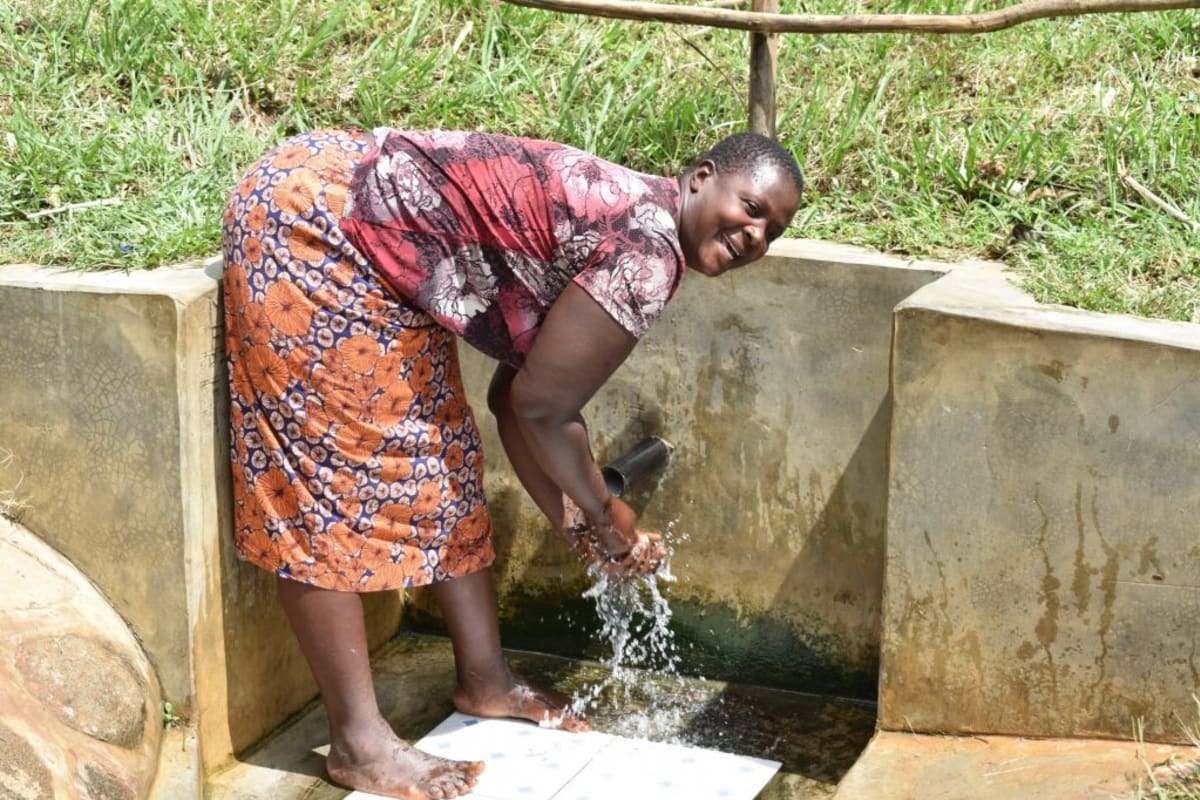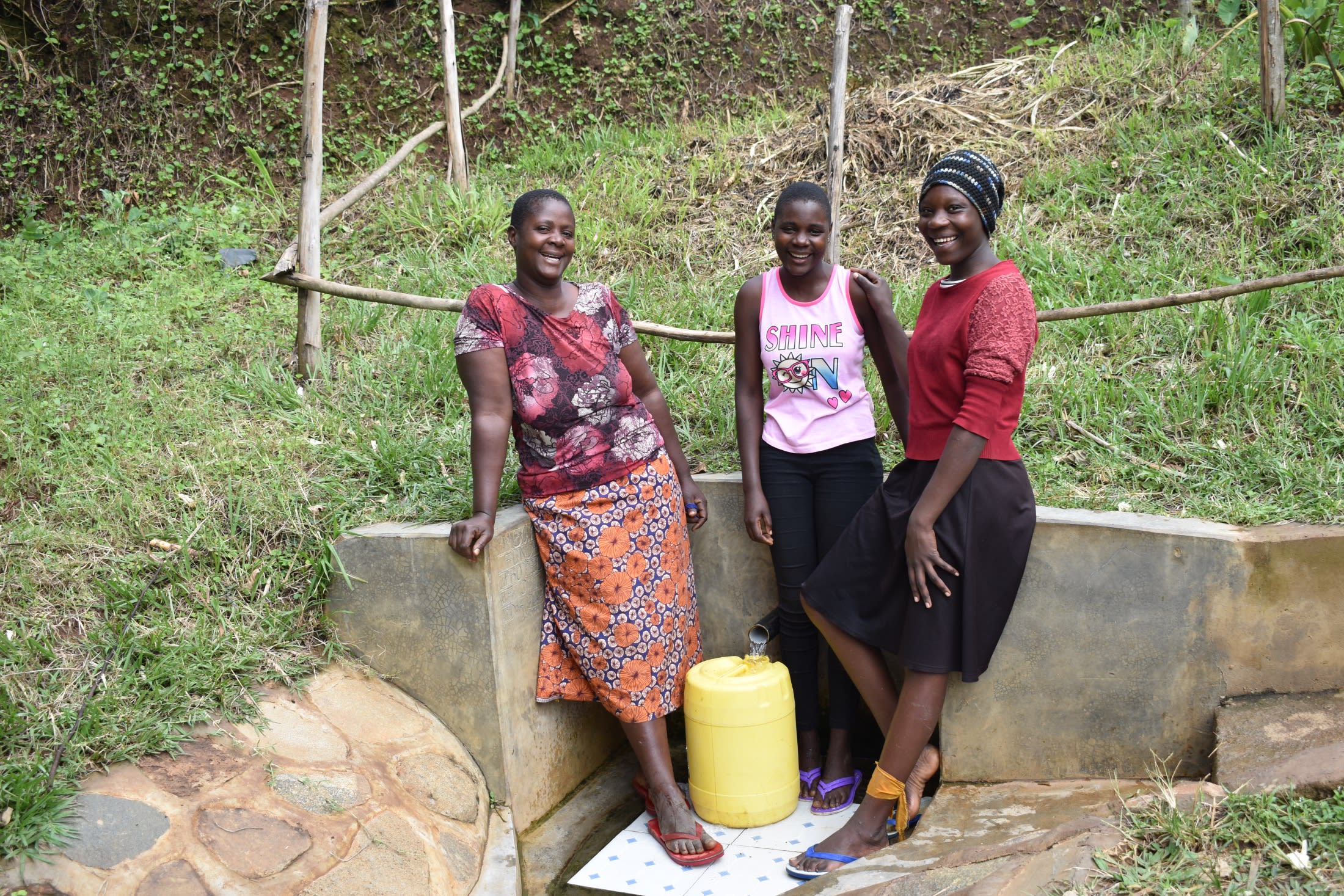The Elwasambi area is slopy and vegetative, with indigenous trees throughout the land. Many of the houses are semi-permanent, and most of the roads are muddy during the rainy season and dusty during the dry season. Most community members here are small-scale farmers. They also have self-help groups that bring people together with one common goal of improving their farming skills and livelihoods.
Mboya Spring is the main source of water for 240 people who live in Elwasambi. The area around the unprotected spring is bushy and without an access point, making it particularly hard to collect water after it has rained. Animals pass through the collection area, further dirtying the water and access point. Animal droppings surrounded the water source - not a good sign for the water's safety and quality.
"Accessing the spring after it has rained is difficult because the spring does have a steep and slippery access point," said Rodrick, a young boy in the community.
A lot of time is spent - and wasted - every day at the unprotected spring. In the morning, long queues at the spring delay people going to their farms and other activities. Later, during lunchtime, most women fetch water again, making them late for preparing lunch for their school-going children who return home for the meal. This, in turn, makes the students late getting back to their afternoon lessons. This cycle of wasted time and lateness continues throughout the day, through dinner preparations and other domestic tasks requiring water. In the morning, the cycle begins again.
"I waste a lot of time in the morning collecting water, and also during lunchtime, making me delay in making lunch for the school-going students," said Phanice Inganga, a farmer and mother in the community.
Sometimes when the community members collect water at the unprotected spring, they find it dirty and contaminated due to the dogs and other animals that pass through the spring at night. Animals and heavy rains can dislodge the makeshift collection point community members made using an old iron sheet. When the water or iron sheet is disturbed, community members have to wait even longer to reset the metal and allow the silt to stir up in the water. As a result, to settle. Sometimes upon arriving at the spring, people find the iron sheet is missing entirely, complicating their efforts to fetch water.
Drinking contaminated water from the open spring leads to waterborne diseases. Community members say they are most frequently sick with typhoid, which drains them of their financial resources as they seek medicine. When sick, adults lose their ability to be productive, and students miss school. The dirty water from this spring is holding everyone back who uses it.
What We Can Do:
Spring Protection
Protecting the spring will help provide access to cleaner and safer water and reduce the time people have to spend to fetch it. Construction will keep surface runoff and other contaminants out of the water. With the community’s high involvement in the process, there should be a good sense of responsibility and ownership for the new clean water source.
Fetching water is a task predominantly carried out by women and young girls. Therefore, protecting the spring and offering training and support will help empower the community's female members by freeing up more of their time and energy to engage and invest in income-generating activities and their education.
Training on Health, Hygiene, COVID-19, and More
To hold training during the pandemic, we work closely with both community leaders and the local government to approve small groups to attend training. We ask community leaders to invite a select yet representative group of people to attend training who will then act as ambassadors to the rest of the community to share what they learn. We also communicate our expectations of physical distancing and wearing masks for all who choose to attend.
The training will focus on improved hygiene, health, and sanitation habits in this community. We will also have a dedicated session on COVID-19 symptoms, transmission routes, and prevention best practices.
With the community’s input, we will identify key leverage points to alter their practices at the personal, household, and community levels to affect change. This training will help ensure participants have the knowledge they need about healthy practices and their importance to make the most of their water points as soon as the water is flowing.
Our team of facilitators will use a variety of methods to train community members. Some of these methods include participatory hygiene and sanitation transformation, asset-based community development, group discussions, handouts, and demonstrations at the spring.
One of the most important issues we plan to cover is handling, storing, and treating water. Having a clean water source will be extremely helpful, but it is useless if water gets contaminated by the time it is consumed. The community and we strongly believe that all of these components will work together to improve living standards here, which will help to unlock the potential for these community members to live better, healthier lives.
We will then conduct a small series of follow-up training before transitioning to our regularly scheduled support visits throughout the year.
Training will result in forming a water user committee elected by their peers that will oversee the spring's operations and maintenance. The committee will enforce proper behavior around the spring and delegate tasks that will help preserve the site, such as building a fence and digging proper drainage channels. The fence will keep out destructive animals and unwanted waste, and the drainage will keep the area’s mosquito population at a minimum.
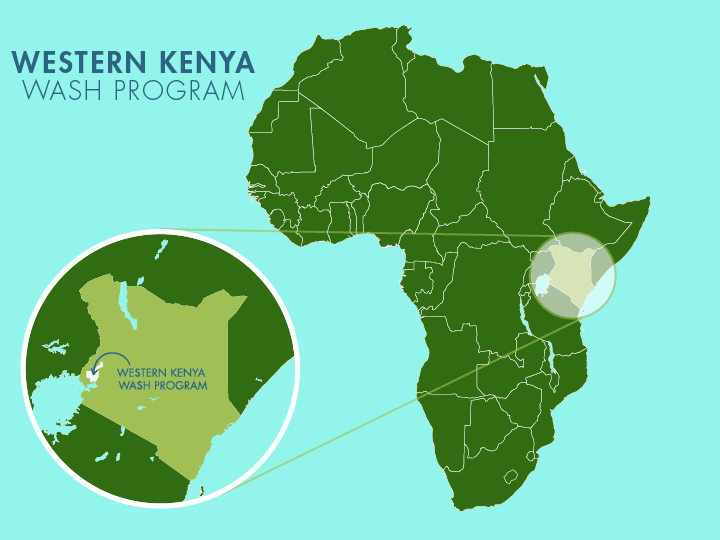
 Protected Spring
Protected Spring
 Rehabilitation Project
Rehabilitation Project

